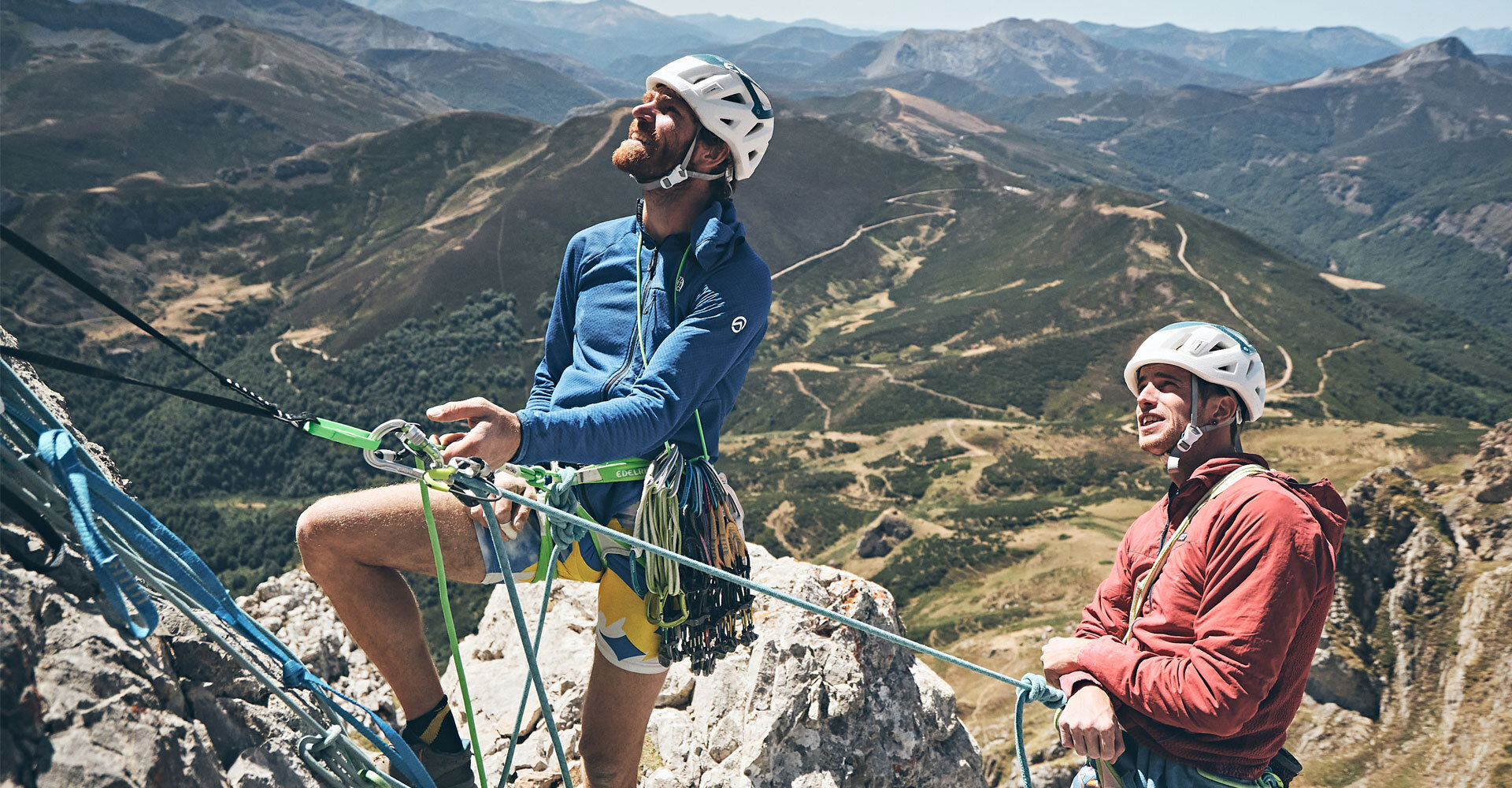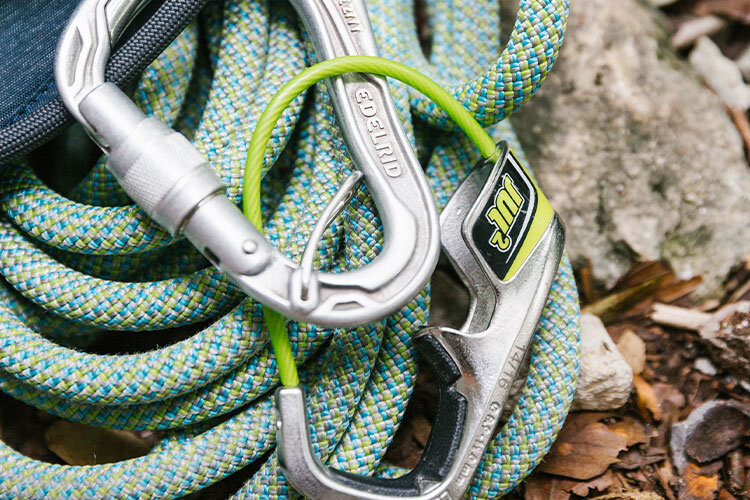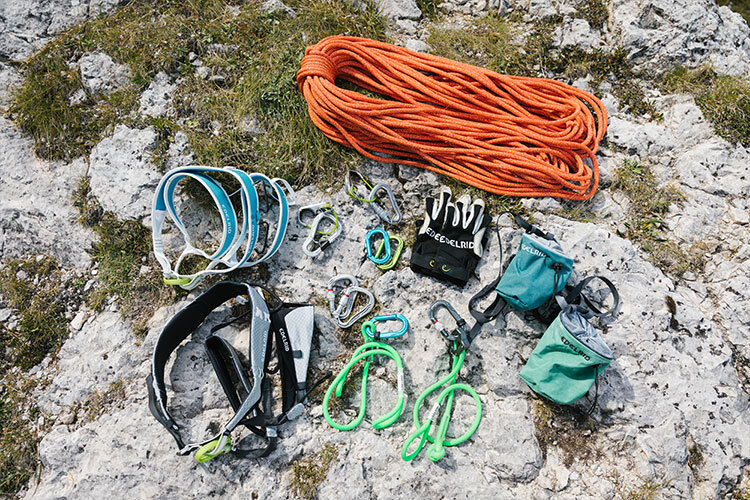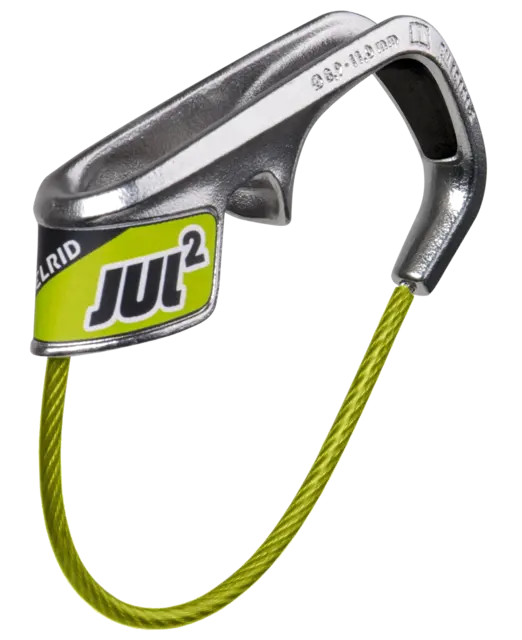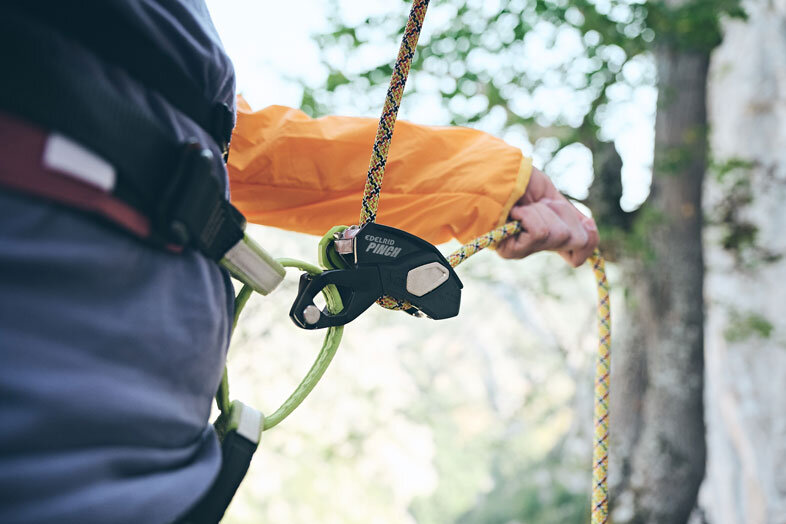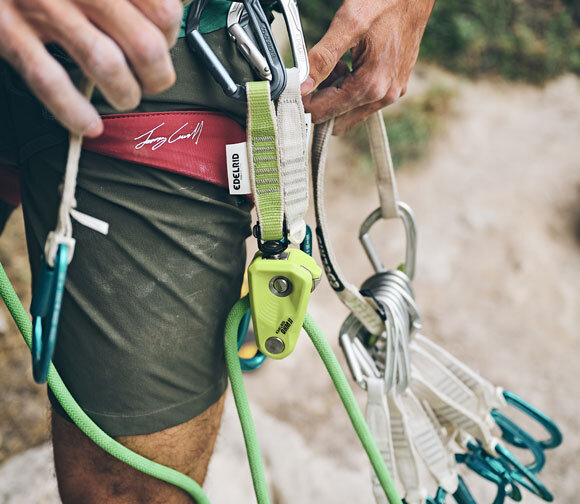The belay device has to fit your skills and plans.
Whatever your plans—a climbing gym, sport climbing, or a multi-pitch route—you need a belay device that you know how to use. After all, as a belayer, the rope, and therefore your partner’s life will be in your hands. The belay device helps you slow the rope and stop a fall, lower another climber, or rappel down a wall yourself.
Here at EDELRID, we work tirelessly to develop innovative new belay devices. These include the unique OHM, which enables partners of very different weights to climb together safely. When developing belay devices, we always focus on uncompromising functionality and simple handling. From us as climbers for you as climbers. So you can climb safely whether at the crag or in the gym.
